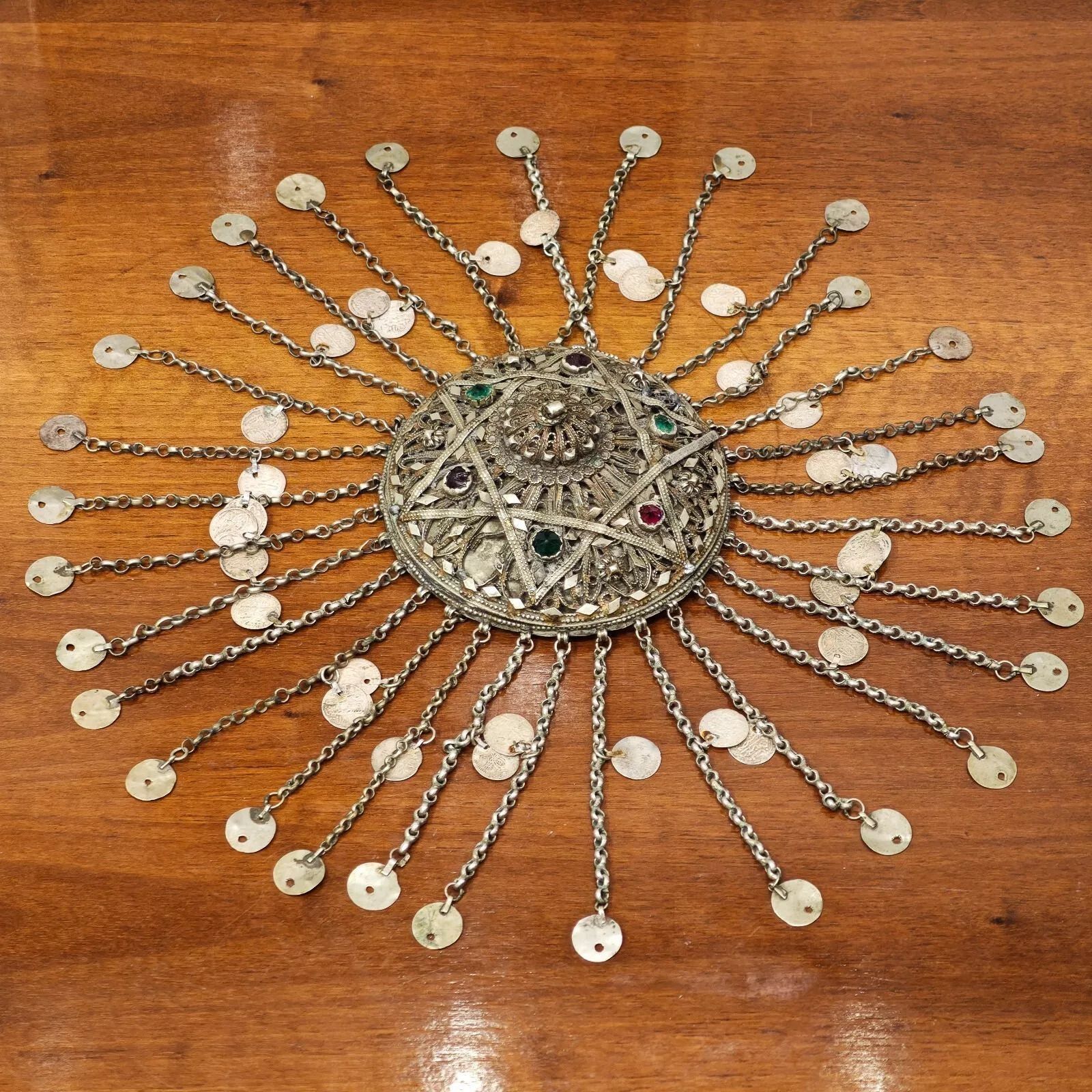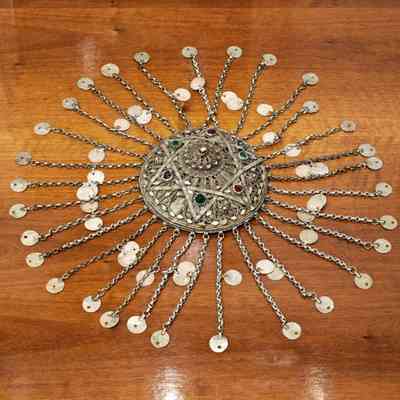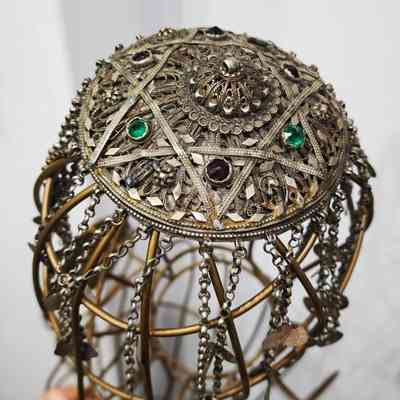Ottoman Armenian Headdress

Name/Title
Ottoman Armenian HeaddressDescription
A tepelik is a traditional Ottoman-era headdress worn primarily by women of high social status, especially during the 19th century. It functioned almost like a miniature crown or tiara, crafted from silver or gold-plated metal, and richly adorned to reflect the wearer’s wealth and status. These ornate caps often featured coins, beads, chains, and semi-precious stones, forming a dazzling display of opulence. Some were engraved with intricate patterns or decorated with delicate filigree work, while others had tassels that hung over the forehead or sides of the face, adding to their dramatic and elegant appearance. Tepeliks were more than decorative; they held deep cultural significance. Often included in a bride’s trousseau, they symbolized not just wealth, but fertility, protection from the evil eye, and the family’s social standing. Their designs varied across regions, with eastern Anatolian styles often reflecting Kurdish or Armenian influences—richer in detail and more tribal—while western versions leaned towards the refined aesthetics of the Ottoman court. Though sometimes mistaken for other traditional items like the fes or takı, tepeliks stand apart as distinct cultural artifacts. They were commonly worn during weddings, festivals, and occasionally in daily life, depending on the wearer’s class and local customs. Many featured a six-pointed star motif at the top—resembling the Star of David—similar to adornments seen on Armenian belts. These pieces were typically made from low-purity silver or other metals, with several coins suspended on chains that jingled and caught the light as the wearer moved, blending personal identity, regional heritage, and artistry into one striking piece of wearable history.Category
Clothing, Fashion, etc.

